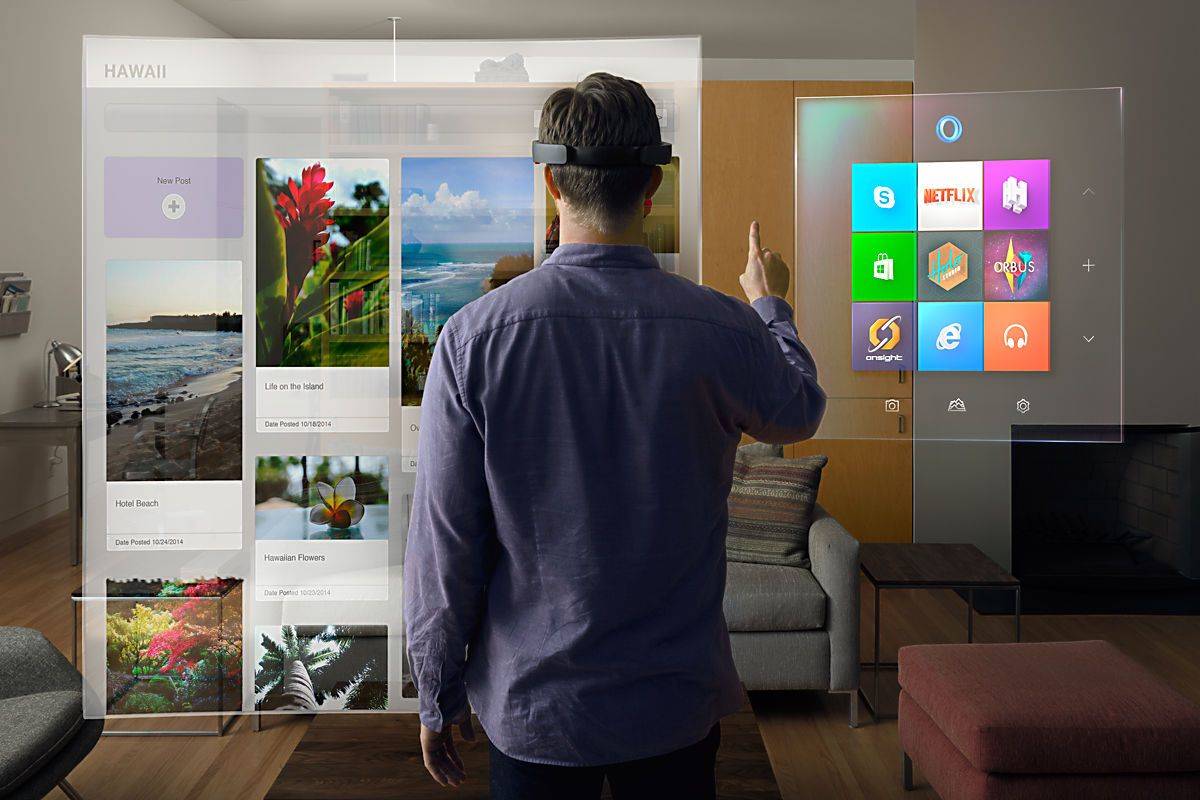Forget about spreadsheets and Word docs — Microsoft thinks the world is ready for holograms.
“We’re dreaming about holograms,” said Microsoft’s Alex Kipman as he introduced Windows Holographic and HoloLens, the company’s new wearable holographic computer. He showed off the device, which is strapped to the head and includes see-through lenses and an array of built-in sensors designed to bring high-def holograms into the real world.
It looks like much more than a dream.
The HoloLens can be used to overlay a wide variety of data onto real physical objects, as Kipman showed during Wednesday’s demo of the new technology during a Windows 10 event. For instance, a remote plumber might show you which nuts to tighten by displaying arrows in front of your eyes as you work on the pipes under your sink. Or, as described by NASA Jet Propulsion Lab scientists who worked with Microsoft on HoloLens, the new technology can let geologists virtually visit Mars or other planets.
HoloLens comes at a time when the future of computerized headgear is murky at best. Google just pulled Glass from the market, while virtual-reality headsets like Oculus Rift are thriving on industry buzz. Sony and Samsung are working on VR headsets, and Apple has toyed with the concept, but nobody’s had a bona fide hit with this type of device.
https://youtu.be/aThCr0PsyuA
Microsoft’s futuristic wearable, which the company said would be available within the Windows 10 time frame, will be more like Glass than Oculus, since it will layer data on top of a normal view of the world.
The HoloLens boasts a CPU, a GPU and an HPU — a new holographic processing unit that helps manage the terabytes of real-time data the device takes in. It’s wireless, and performs all these holographic processing without a PC connection.
Windows 10 is built to be cross-platform, and holographic computing powered by Microsoft’s APIs will be part of what the company is billing as a seamless, universal platform for PCs, tablets, smartphones and other devices.
“With Windows 10, holograms are Windows universal apps and Windows universal apps can work as holograms,” the company said, “making it possible to place three-dimensional holograms in the world around you to communicate, create and explore in a manner that is far more personal and human.”
Microsoft’s Holo Studio suite will let users create 3-D objects that can be shared as holograms or printed with a 3-D printer. During the demo, one of Kipman’s colleagues strapped on a HoloLens and used Holo Studio to crank out a quadcopter drone, “gluing” the parts together in midair and “painting” the object with digital tools. Then Kipman pulled out a flying, 3-D-printed version they’d supposedly put together the day before.
During the HoloLens demo, which was part of Microsoft’s big Windows 10 presentation, Kipman’s voice rose with excitement almost like a nerdy supervillain revealing his plan to dominate the world.
He even revealed that Microsoft has been working on the project for years — from a secret lair!
“We’ve been hiding in plain sight,” Kipman said, revealing that the secret HoloLens development lab was located in the Microsoft visitor center, directly underneath where Wednesday’s live-streaming presentation took place. The only thing missing was a pool of sharks.
https://youtu.be/aAKfdeOX3-o


